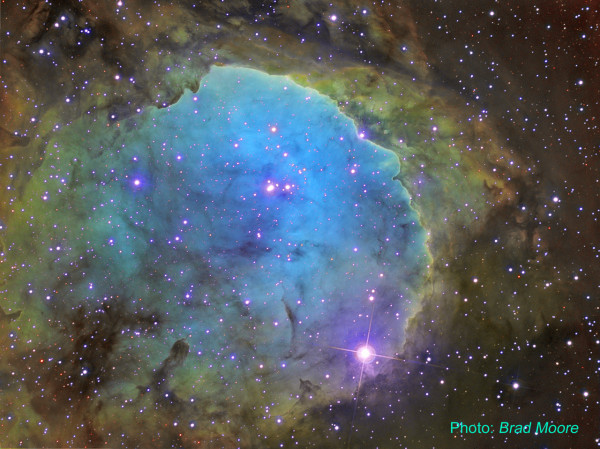“People get cranky when you burst their bubble. Over time, advances in astronomy have relentlessly reinforced the utter insignificance of Earth on a celestial scale.” -Nathan Myhrvold
When new stars form from a collapsing molecular cloud, the hottest, bluest, brightest stars emit high-energy ultraviolet radiation. This evaporates, ionizes and pushes the gas outwards, creating a bubble effect.
 Image credit: Copyright 2006 Brad Moore and Southern Astro, via http://hubblesite.org/newscenter/archive/releases/2008/34/image/e/.
Image credit: Copyright 2006 Brad Moore and Southern Astro, via http://hubblesite.org/newscenter/archive/releases/2008/34/image/e/.
Thanks to the Hubble Space Telescope and its ability to hone in spectroscopically and at high resolution, we can learn exactly what happens inside the bubble, outside, and right on the border. It's a spectacular sight that teaches us a ton about the Universe.


The bubbles often seem to have well-defined edges. You (or I, at least) would expect the edges to be fuzzy always.
Absolutely beautiful shots, of course...here's to Hubble's successor!